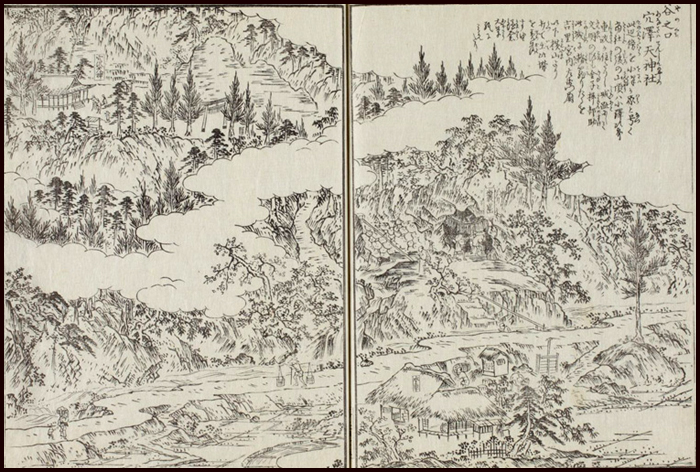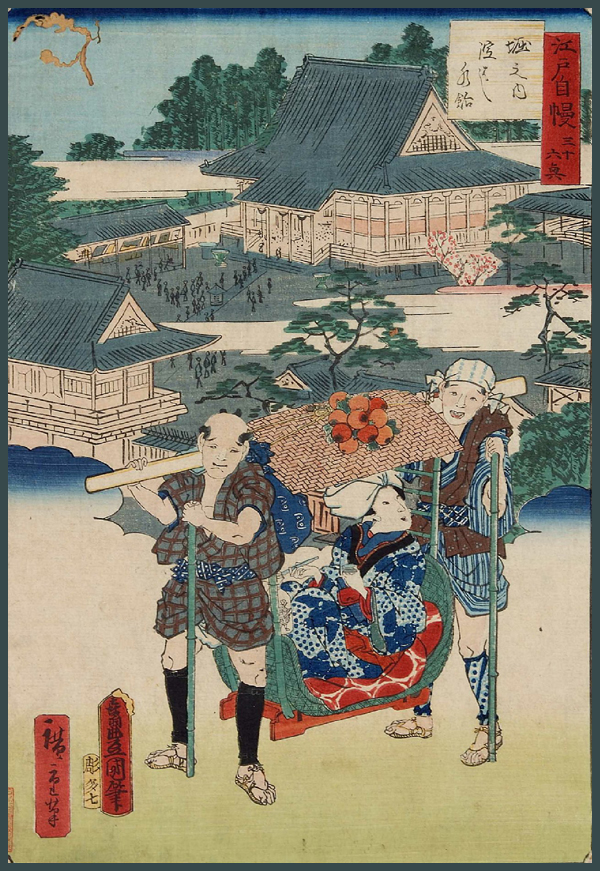. Famous Places and Power spots of Edo 江戸の名所 .
::::::::::::::::::::::::::::::::::::::::::::::::::::::::::::::::::::::::::::::::::::::::::::::::::::::::::::::::::::::::::::::::::::::::::::::::::::::::::::::::::::::::::::::::::::
Yanokuchi 谷の口 / 矢野口 and 穴澤 Anazawa
.......................................................................
穴澤天神社 Shrine Anazawa Tenjin no Yashiro
稲城市 Inagi City
- reference source : anazawatenjinjya_reitaisai ... -
- quote -
The area of Inagi has been settled since the Japanese Paleolithic, or for over 20,000 years, based on projectile points, stone tools and microliths found in several locations within city borders.
There is evidence of several Jomon period settlements, but settlement disappeared towards the end of the Jomon period due to climate change and eruptions of Mount Fuji. The area was sparely settled in the Yayoi period, with increasing settlement density in the Kofun period.
A number of Nara period remains have been found, including the ruins of a roof tile kiln.
During the Heian period, the area became part of a shōen controlled by the Oyamada clan, and later by their cadet branch, the Inabe clan into the Kamakura period, and was an area contested between competing branches of the Ashikaga clan and Uesugi clan in the Muromachi and Sengoku periods.
After the start of the Edo period, the area was tenryō controlled directly by the Tokugawa shogunate.
Inagi as a municipality was founded on April 1, 1889 as a village in what was then Minami-Tama District, Kanagawa Prefecture, from the merger of 6 pre-Meiji period hamlets with the establishment of the modern municipalities system. The district was transferred to the administrative control of Tokyo Metropolis on April 1, 1893.
On April 1, 1957, Inagi Village was promoted to town status, and to city status on November 1, 1971.
- - - More in the WIKIPEDIA !
- quote
Yanokuchi Anazawa Tenjin-no-yashiro 谷の口穴澤天神社 Shrine
Anazawa Shrine is a shrine where the deity 少彦名大神 Sukunahikona-no-Ōkami is enshrined.
It is said that 菅原道真 Sugawara no Michizane was enshired together here when it's pavilion was repaired in 1694
and the shrine became Anazawa Tenjin-no-yashiro.
In the precinct is a fudezuka 筆塚 (burial mound for treasured calligraphy brushes)
built there to honor the achievements of Harada Kinryō 原田金陵 Harada Kinryo who engaged in the study of calligraphy.
- source : Tokyo Metropolitan Library
.......................................................................
- quote -
Kuniyasu-no-miya Ikō-ji 国安宮 威光寺 Ikooji, Temple Iko-Ji
Ikō-ji in Yanokuchi, Inagi city, is a temple of the Shingon Buddhism
and subordinate to Kosho-Ji 高勝寺 Kōshō-ji Temple in Sakahama of the same city.
This temple is sacred to a seated figure of Dainichi Nyorai.
- source : Tokyo Metropolitan Library -
::::::::::::::::::::::::::::::::::::::::::::::::::::::::::::::::::::::::::::::::::::::::::::::::::::::::::::::::::::::::::::::::::::::::::::::::::::::::::::::::::::::::::::::::::::
- quote -
江戸の里神楽 (穴澤天神社・矢野口) Anazawa Tenjin no Yashiro, Yanokuchi
山本頼信社中による神楽(8月25日)Kagura on August 25
- source : inagi-sci.jp/taking_a_walk/ana ... -
::::::::::::::::::::::::::::::::::::::::::::::::::::::::::::::::::::::::::::::::::::::::::::::::::::::::::::::::::::::::::::::::::::::::::::::::::::::::::::::::::::::::::::::::::::

- - - To join me on facebook, click the image !
:::::::::::::::::::::::::::::::::::::::::::::::::::::::::::::::::::::::::::::::::::::::::::::::::::::::::::::::::::::::::::::::::::::::::::::::::::::::::::::::::::::::::::::::::::::
. Musashi no Kuni .
. Famous Places and Powerspots of Edo 江戸の名所 .
[ . BACK to DARUMA MUSEUM TOP . ]
[ . BACK to WORLDKIGO . TOP . ]
- - - - - ##yanokuchi ##anazawa #tenjin #musashino #inagi - - - -
::::::::::::::::::::::::::::::::::::::::::::::::::::::::::::::::::::::::::::::::::::::::::::::::::::::::::::::::::::::::::::::::::::::::::::::::::::::::::::::::::::::::::::::::::::






































